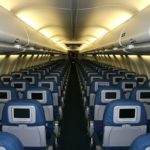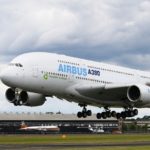An aircraft disinfection procedure is a set of step-by-step instructions compiled by an organization to help workers carry out the cleaning and disinfection operations. The standard operating procedure (SOP) of aircraft disinfection aims to achieve efficiency, quality output, and uniformity of performance while reducing miscommunication and failure to comply with industry regulations.
The Key Factors of Aircraft Disinfection Procedures
(1) use different cleaning tools(e.g. cloths and mops) for each area, potentially color-coding
them, in order to reduce cross-contamination;
(2) not cause damage to the aircraft components, should rub and visibly wet the surfaces
with disinfectant for the entire contact time (also known as ‘wet time’) indicated on the
product label, and remove it afterward;
(3) apply disinfectant on the floor from front to aft, and then again in the opposite direction
before any other cleaning and disinfection maneuvers;
(4) typically perform a thorough cleaning before disinfection;
(5) clean and disinfect the key areas as noted below, beginning from the top (ceiling) and moving progressively downwards (floor), working from clean-to-dirty areas:
Segment Wise Procedures for Aircraft Disinfection
(a) Aisles
Ceiling, overhead bins, reading lights, air-supply nozzles, sidewall panels, windows and window shades, seats (tray tables, armrests, passenger control units, and decorative panels), cabinets/lockers, bulkheads, magazine racks, cabin crew seats (jump seats).
(b) Lavatories
The disinfection of lavatories should be progressed from clean areas to contaminated areas, as follows: ceiling, sidewalls, toilet bowls, waste bins, basins,
door assembly (door surfaces, door handles, locking device, and ashtrays (if installed)).
(c) Galleys
Ceiling, ovens, water boilers, coffee makers, galley facilities, lockers/drawers, waste bins.
(d) Flight crew compartment
For aircraft where the flight crew compartment is separated from the passenger cabin, relevant flight crew compartment surfaces and equipment should be thoroughly cleaned before starting the flight preparation.
Preventive disinfection should be considered following layovers in which the flight crew had to leave the airport restricted areas (e.g. transfer to a hotel for a rest period) in areas with confirmed local transmission of SARS-CoV-2. Otherwise, the flight crew compartment should be routinely cleaned.
For aircraft where the flight crew compartment is not separated from the passenger cabin, the frequency of preventive disinfection of the flight crew compartment should be the same as for the passenger cabin. Cleaning and disinfection of the flight crew compartment should be performed by properly trained staff.
(e) Cabin
All galley surfaces and equipment, such as the equipment used for pre-flight safety demonstration, communication equipment, and cabin crew seat harnesses should be thoroughly cleaned and disinfected before starting the flight preparation. Frequently touched cabin equipment, such as interphones, should be thoroughly cleaned and disinfected before and after every flight and, if necessary, during the flight. Approved disinfectant/sanitizers should be available onboard.
Disinfection of Seats
All passenger seats and seat belt buckles should be thoroughly cleaned and disinfected. The cleaning procedure should be adjusted depending on the material used for the seat/seat covers, for example:
Woven Fabrics – Seat Covers need to be removed and either dry-cleaned or machine washed to eliminate the risk of transmission to safe levels. Whilst the top surfaces may be able to be cleaned, the woven nature of the product means that the bottom layer and section where the yarns intersect cannot be sufficiently cleaned or disinfected without the removal of the dress cover.
Leather – Genuine leather has a wipe-clean surface but should only be cleaned with mild soap or surfactant solution so as to avoid irreparable damage to the product. Genuine leather cannot be dry cleaned or machine washed.
Coated Fabrics (e.g. synthetic leather) – provided the product has a polycarbonate topcoat, the following preventive disinfection should be considered:
Clean the seat cover using an approved cleaning solution and/or vacuum cleaner to remove any foreign objects or debris and clean the surface.
Using one of the approved disinfection products, apply the disinfection product and allow it to sit on the surface as per the manufacturer’s recommended dwell time.
After the dwell time, wipe the surface down with a damp cloth to remove a residual disinfectant.
Items that are frequently used should be cleaned and disinfected, including overhead stowage compartment handles, passenger control units, touch-screen monitors.
(f) Oxygen-dispensing equipment and emergency equipment Should oxygen-dispensing equipment (i.e. therapeutic oxygen, drop-down oxygen masks, and quick-donning masks) or other emergency equipment be used during the flight, it should be thoroughly cleaned and disinfected after use.
Residual Disinfection Substances
Any residual disinfection substances that may be harmful to humans should be removed from the seat covers or any other surfaces. This is essential, especially when using cleaning and disinfection products that can cause skin irritation or harm.
Principle of Disinfection
Disinfection should follow the general principle of thorough disinfection from out ring-to-center, top-down and all-around approach.
Documentation of Disinfection Service
The cleaning and disinfection activities should be documented by making use of the Aircraft COVID-19 disinfection control sheet. The template is aligned with the ICAO PHC4 form.







